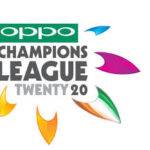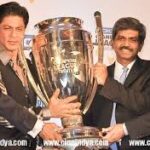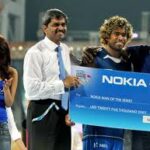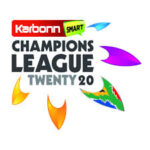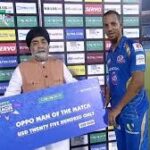Brand New Resolutions MMXV
It’s that time of the year again and A Brand View Story is back after a break! A break meant some time to think and what better to think about than how the next year should be from the perspective of brands.
So here are 5 Resolutions for 2015….
Start using “Radio” more effectively

First up a disclaimer, I hold no brief for the industry. What I write simply comes from the understanding; however little, gained by virtue of being a part of the industry. I believe that brands have tended to overlook the benefits that radio as a medium affords them.
The reasons for the brand apathy perhaps are not as much related to the lack of understanding of the benefits but to the lack of measurability. Apart from the commercial broadcast service of the AIR, there are over 200 FM stations across 89 cities and towns today. The estimated listenership at or over 300Mn is certainly higher than newspapers as medium in terms of penetration. Sadly though, from a measurement perspective listenership data is tracked only in four cities by RAM. The other source of listenership data the IRS is too little to go by. Given this lack of measurability brands and agencies both are reluctant to plan better campaigns on Radio.
To justify spends and existence Radio stations are in today’s context de facto activation agencies.
With the Phase III of FM set to take FM radio to 300 towns the time is ripe for brands to relook their media strategies. It also is high time the industry came together and invested in a better, more robust and representative measurement system. With the C&S explosion, the ad-spends on Radio moved towards the lesser/niche channels that were available for a bargain and lately Digital is the blue-eyed boy.
The Prime Minister of the country has already made the medium his own with his “Mann ki Baat”. Question is, are the brands alive to this low hanging fruit in the media-scape?
Stop “SELFIE” campaigns

I for one have had enough of brands using the “selfie” phenomenon. I have in a previous post titled “SELFIE Obsession” aired views on this. Just like other fads it’s time to bid this one goodbye.
 Stop confusing “INVOLVEMENT” with “ENGAGEMENT”
Stop confusing “INVOLVEMENT” with “ENGAGEMENT”I don’t mean to split hair here. These are adjacent words and I am aware that context defines their use. It is a fine line and as marketing professionals we have got to understand the difference between consumer Involvement and consumer engagement. I am sure we are in agreement that we have had enough euphoria around campaign activations and saying wow. The difference between the two terms essentially lies in the degree.
The basis of activations is for brands to have a “conversation” with the consumer affording them an opportunity to “engage” with the brand. The passerby, the bystander and the participant are different entities. The smart(er) brands are looking beyond the numbers, looking for patterns leading up to consumer participation.
Patterns do not emerge if you look at the data only when you need it; they only emerge if you are constantly looking at it. In a manner of speaking, analysts need to be like alchemists. They need to keep mixing stuff with the singular belief that they will produce gold!
More of “Swachh Bharat Abhiyaan”

Sincerely believe in this one. If all the brands and corporate house pledged their CSR budgets towards this movement we can make a visible difference. SBA is not a one-time thing it has to be a constant endeavor.
There was a very poignant scene in Sir Richard Attenborough’s Gandhi wherein the Salt Satyagrah is depicted. The undeterred peaceful protestors keep coming at the British to face their assault. That’s the kind of perseverance the Swatchh Bharat Abhiyaan requires. We have to shame those who litter into mending their ways.
http://www.youtube.com/watch?v=ciTmDDFjFvk
It’s not just the government alone who will need to keep at it. Individuals and organisations need to adopt blocks, localities, towns etc and guard (read keep them clean) zealously. The government should consider offering exclusive branding rights to corporates for zones that they maintain.
Charity as they say begins at home and this is as much a note to self.
Less of Cricket (T20) sponsorships

Again this is one that has been done to death. Especially the T20 variety. Brands have put money on any cricket that has come their way. From Celebrity Cricket Leagues to Gully Cricket Leagues all are attracting marketing spends with questionable returns. Planners and bean counters would well be advised to look at options in 1 & 4 above.
Those were my two cents. Here is wishing all a very prosperous 2015!
To Cut A Long Story Short
 Brand pundits have forever stressed on the importance of brands creating long term associations. There is a vast choice of media that is available today to brand managers and media planners. Given a scenario where investments are often spread across disparate media, the onus is on the brand to tie the choices with a meaningful message.
Brand pundits have forever stressed on the importance of brands creating long term associations. There is a vast choice of media that is available today to brand managers and media planners. Given a scenario where investments are often spread across disparate media, the onus is on the brand to tie the choices with a meaningful message.The new century and the social media boom gave a new meaning and a fresh lease of life to what have come to be known as Integrated Media Properties. These are typically brand association opportunities that are multi-platform including a combination of TV, Digital, Print, OoH and On-ground events. The most popular being Live Action Sports events, Reality Shows and Award Functions with varying doses of the Bollywood glitz and glamour.
The media houses in order to retain a larger chunk of the marketing dollar conceptualized and networked to create more and more such opportunities throwing in dollops of commercial time, screen space, you name it to maximize brand presence. The agencies as expected were quick to evaluate and ascertain value of each such offering. Huge outlays were made possible with the promise and lure of multiple X returns on marketing investment. The brand teams were happy since they now had a “property” to associate with, build and nourish long term. The agencies and media houses of course were too happy to rake in the moolah. The bean-counters all round were happy too.
Nothing as they say is perfect! Soon with the pressures of economy and other dynamics the brands were shy of making long term commitments and vary of huge outlays. Owning a property didn’t seem that attractive. Several wound down.
Only the property “IP” owners with staying power remained in the fray. However, they sold the dream in parts to realize their investment. The “integrated multi-media platform” and “long term association” story that was used as the foundation crumbled under economic pressures.
There are several examples of “properties” having changed hands. However, to highlight the case in point I will take the example of the Champions League T20.
CLT20 and Sponsors over the years This cricketing event was almost force fitted into the international cricketing calendar. In its 5th edition the property has already had 4 brands as its title sponsors.
Airtel, for the inaugural season followed by Nokia the very next year, Karbonn for the next two seasons and now Oppo for the 2014 edition. The brands (Basis the Most Trusted Brands Survey) and the brand muscle eroding every subsequent year.
The full page ad that appeared in ToI on 17/9/14 had no mention of the sponsors. Gone were the benefits of long term association and even the media platforms if at all integrated, were not all available to the brands. Being the “Title Sponsor” no longer meant getting the fully loaded top end version with all bells and whistles. With the long term vision being out the brands did not really “own” the property and nourish it with their support across their other assets to engage the TG.
The best associations often become integral and a given. Some great examples of association exist in sports like tennis, football and F1. Wimbledon and Rolex, French Open/Davis Cup and BNP to name a few.
Marketers being marketers, “impact properties” became a more popular term of reference.
I am sure the numbers on RoMI all still add up. The question really is whether the brands are really building an association with the TG?
Building Brands Brick by Brick…Literally!
 I was tuned into one of the local FM stations in Delhi as I was driving this morning and I encountered a virtual traffic jam. I changed at least three FM stations trying to catch a song and ran into the radio spots of popular developers in the Delhi NCR. Which is what set me thinking.
I was tuned into one of the local FM stations in Delhi as I was driving this morning and I encountered a virtual traffic jam. I changed at least three FM stations trying to catch a song and ran into the radio spots of popular developers in the Delhi NCR. Which is what set me thinking.We (at least those of us living in the top eight metros) are surrounded today by communication/messages from Real Estate as an industry. Be it television, print, radio, digital or outdoor they are everywhere. According to a recent report 22% of the AdEx comes the real estate industry Given that the you and me of the world are their TG and we seem to be getting exposed to all this communication someone somewhere must be doing their job right. Or is it?
What really is getting communicated to me is that there are lots of choices if I really were to buy property in and around Delhi. The choices indeed span taste and size of pocket. Which at most basis the textbook stages of building brand equity would fall in the awareness category. Push comes to shove, one might even be able to mention the names of a few builders (some brand managers would feel happy ticking of their ToM targets) hence there is some amount of brand recognition that the communication is delivering. Now comes the tricky part. The part that deals with creating a preference for the brand and then extending it into loyalty. Textbook!
Luxury The question in my mind though is whether this cookie-cutter approach works for brands in the real estate space? What really goes into building a brand in the real estate space? What role does the brand have to play in the process/decision of purchase?
For the sake of this discussion we shall look at those who set out to buy with the intention of inhabiting it or at best are looking for a secure investment. For the middle class, buying a house is not a simple decision. Unlike most other purchase decisions brands are not competing with other brands. They are competing with the process of purchase itself. If we were to take a look at what is competition for the brands whilst vying for consumer attention, the list would be long and for anyone who has gone through it, tiring. Starting from the point of realization i.e. “Yes! I/we need to buy a house” through the journey of information seeking, comparison, evaluation etc. the brand of the product which in this case is the house comes in very late into the equation. After going through the usual Where, What, When, How Big, How Much, What else do I get rigmarole the brand often is incidental.
So is there no point building brands in real estate? No, that is neither the import nor the message. The point is brand managers and agencies involved do not seem to be creating communication that is built on a complete understanding of the role of the brand. Most communication is dimensioned on price or the location or the amenities provided etc.
[youtube=http://www.youtube.com/watch?v=P3dzbW35_cM]
Brands in the real estate are in my opinion, built on one of the fundamental gauges of brand strength, trust. Here is a category where the past performance and future promise hold equal importance. The future is aspiration while the past is assurance. Every project that is completed is living testimony to how the brand fared on its time, cost and quality commitments. Every brick that gets laid is literally building the brand. Some of the better brands do talk about this but it usually is a passing mention and easy to miss.
For a sector that is the 2nd highest spender on media/advertising there was not a single real estate brand in the Top 100 of the Brand Equity Most Trusted Brands in India. In fact basis another report the first real estate brand appears at 516 in a list of Top 1200 brands! Of the ones that do appear, not all are into housing.
It is in building and communicating trust that real estate brands need to invest. Basis evidence they sure have a long way to go. Or should I say several floors to the top!


